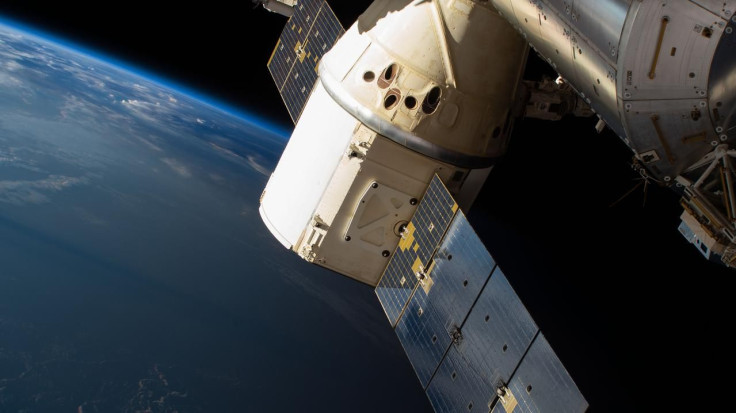SpaceX Dragon Coming Home From ISS After A Month In Orbit

KEY POINTS
- SpaceX Dragon is set to depart the ISS on Jan. 5
- It is expected to splash down in the Pacific Ocean early on Jan. 6
- The spacecraft will bring 3,600 pounds of valuable cargo home
The SpaceX Dragon resupply spacecraft is scheduled to leave the International Space Station (ISS) on Sunday, Jan. 5. On its way back home to Earth, the spacecraft will be carrying nearly 3,600 pounds of cargo and valuable scientific experiments.
SpaceX Dragon Comes Home
The Dragon launched to the ISS for CRS-19, its 19th resupply mission to the ISS, early this past December, carrying 3 tons of supplies on the journey. On Sunday, Jan. 5, it will finally depart from the ISS to return back to Earth, and its departure will be broadcast live via NASA Television and its website beginning at 9:15 p.m. EST.
For its departure, mission control in Houston will issue the remote commands for the Canadarm2 robotic arm to release the Dragon at 9:41 p.m., with Station Commander Luca Parmitano monitoring the systems as it departs. The Dragon will then fire its thrusters to get to a safe distance from the ISS before executing a deorbit burn for a parachute-assisted splashdown at about 3:04 a.m. on Monday, Jan. 6.
We’re days away from releasing the #Dragon! 🐉
— NASA (@NASA) January 1, 2020
Filled with almost 3,600 pounds of scientific experiments and cargo, a @SpaceX Dragon resupply spacecraft is set to leave our orbiting laboratory Sunday and we’ll broadcast its departure: https://t.co/IiBPxqxxA9 pic.twitter.com/puyu3J7zfX
The splashdown will not be part of the NASA TV live broadcast.
Scientific Experiments
When it comes back to Earth, the Dragon will be carrying the faulty battery charge-discharge unit that failed to activate after the installation of new lithium-ion batteries last October. They were eventually replaced by flight engineers Christina Koch and Jessica Meir during a spacewalk and will be brought back to Earth for evaluation and repairs.
The Dragon’s cargo going back to Earth also includes some of the scientific experiments conducted aboard the ISS. This includes Rodent Research-19 in which the pathways that influence muscle degradation were examined in hopes of preventing astronauts’ muscle and bone loss during spaceflight and even on Earth.
Another experiment coming home is Rotifer-B1, which examined rotifers, freshwater aquatic animals that are highly resistant to radiation on Earth, to see if they have similar adaptations in microgravity.
The “Perfect Crystals” study is also coming back home. The experiment aimed to find a way for the human bodies to deal with radiation during long spaceflight missions using the same naturally-occurring protein that it uses to handle low-level radiations here on Earth.
“These are just a few of the hundreds of investigations providing opportunities for U.S. government agencies, private industry, and academic and research institutions to conduct microgravity research that leads to new technologies, medical treatments, and products that improve life on Earth,” NASA said.
In the 20 years that humans have resided aboard the ISS, it has so far hosted over 2,500 research investigations from researchers in 106 countries.
© Copyright IBTimes 2025. All rights reserved.





















